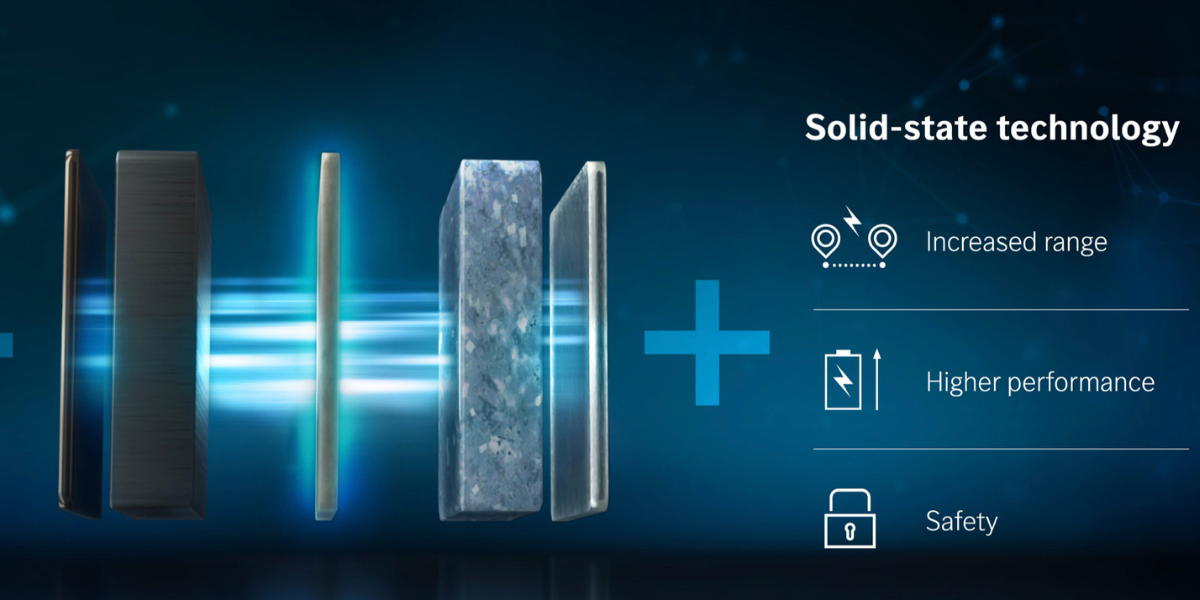Battery life, excellent news for users and CO2 emission reduction
Over the last five years, the world of electric vehicles has undergone significant changes. Geotab Inc., a company that develops and markets telematics hardware and software for automotive use, found that EV batteries degraded at an average rate of 2.3% per year in 2019. Of course, some EVs outperformed others, but the overall average was surprisingly good. In 2024, it conducted a new analysis, and the results show that EV batteries have improved significantly, degrading at 1.8% per year on average. Geotab research indicates that EV batteries could last 20 years or more if they degrade at an average rate of 1.8% per year, as observed. This is excellent news for fleet operators and managers who are under increasing pressure to reduce CO2 emissions due to government mandates, investors, environmental groups, the public, and other stakeholders. The most effective way for fleets to reduce emissions is to switch to electric vehicles; however, despite significant performance improvements, fleets remain sceptical that EVs can replace light, medium, and heavy-duty ICE vehicles. Telematics data insights can provide fleets with the confidence they need to incorporate electric vehicles. 75% of light commercial vehicles could be replaced by comparable EVs right now. An EV could save $15,900 per vehicle over the course of its life.
Better data leads to more confident decisions
Fleets require reliable and current data on EV batteries, range, capabilities, and costs in order to be confident that EVs can replace ICE vehicles. This research assists fleets in understanding how EV batteries perform in the real world and how EVs can be integrated into their operations while also supporting strategic goals such as environmental pledges and cost reduction.
EV battery performance and health are key to EV confidence
An EV battery is the vehicle's most expensive component; procurement decisions must consider how the battery's capacity and health will change over time. The longer the battery life, the more the EV can be used, and the more fleets can save.
Do electric vehicle batteries degrade?
All batteries degrade, including EV batteries. However, EV batteries are generally in good health, and battery degradation rates are improving in newer models. EV batteries degrade at 1.8% per year on average. In 2019, an average annual degradation rate of 2.3% (which was already very good) was established.
What is the definition of EV battery degradation?
Battery degradation is a natural process that permanently reduces a battery's energy capacity or power output. The batteries in EVs can typically deliver more power than the powertrain components can handle. As a result, power degradation is rarely visible in EVs, and only the loss of the battery's ability to store energy is relevant. The condition of an electric vehicle battery is known as its state of health (SOH). Batteries begin their lives with 100% SOH and gradually deteriorate. For example, a 60-kWh battery with 90% SOH would perform similarly to a 54-kWh battery.
Is EV battery degradation linear?
While the analysis shows more or less linear degradation, EV battery life is expected to decline nonlinearly: an initial drop followed by a much slower decline. As the battery nears the end of its life, drivers can expect a significant drop in its state of health, as illustrated in the chart below.
Do electric vehicle batteries wear out?
Of course, EV batteries, like all batteries, will eventually wear out, but in most cases, this will be long after the vehicle's life-cycle has ended, and the batteries may have a second or third life in other applications.
How frequently do EV batteries need to be replaced?
The vast majority of batteries will outlast the vehicle's useful life and never need to be replaced. If an average EV battery degrades at 1.8% per year, it will still be in good condition after 12 years, which is typically longer than the average fleet vehicle's lifespan. However, because we expect EV battery life to decline nonlinearly, there will most likely be a greater drop-off as the battery ages.
Do electric vehicles lose range over time?
Yes, as an EV battery ages, the vehicle's maximum range reduces. For example, if you buy an EV today with a 300-mile range, you will lose an average of 21 miles after five years and 45 miles after ten years. This decline is unlikely to have a significant impact on most drivers' day-to-day needs, but it is something fleet managers must consider when maximising the value of their electric vehicles. Importantly for consumers, automakers commonly provide an eight-year or 100,000-mile warranty on EV batteries. This is the federal minimum in the United States, which varies by manufacturer and country. However, electric car batteries are expected to last much longer, even in high-use vehicles. However, the question of how long an electric car battery lasts is complicated, as numerous factors influence EV battery longevity.
Common factors affecting electric car battery life
Today's battery electric vehicles (BEV) and plug-in hybrid electric vehicles (PHEV) primarily use lithium-ion batteries. Several key factors influence how long lithium vehicle batteries last and how quickly their range declines. Considerations for batteries include:
- Age
- Temperature
- operating state of charge
- charging method (AC vs DC)
- energy cycles
- battery chemistry
- thermal management components
How does temperature affect the life of an electric vehicle's battery?
Batteries degrade faster on hot days than in temperate climates. How much do temperatures impact EV batteries? Will an EV in Arizona have a different battery life than the same vehicle driven in Norway? To find out, vehicles were grouped according to the following climate conditions:
Temperate: Less than 5 days per year over 80℉ (27℃) or below 23℉ (-5℃).
Hot: More than five days per year above 80℉ (27℃).
Vehicles driven in hot climates declined at a significantly faster rate than those driven in moderate climates. This is not good news if you and your fleet work in the hot sun, but keep reading for best practices to reduce the impact of heat on your fleet.
How does vehicle make, model, and year influence battery performance?
Why do some vehicle models degrade more quickly than others? Two potential contributors are battery chemistry and thermal management of the battery pack. While most current EVs use lithium-ion batteries, there are numerous variations of lithium-ion chemistries, which will affect how they respond to stress. One significant distinction is whether the battery pack is cooled and/or heated by air or liquid. One exciting finding from this study is that high-use electric vehicles did not have significantly higher battery degradation than others. This should be good news, as EVs get better value the more they drive. What's the takeaway? Their battery life will not be compromised as long as they remain within their daily driving range.
How do different charging methods affect battery health?
When controlling for DC charging, there is no significant difference in degradation rates between high- and low-use vehicles. However, when we examined the same vehicle model in a high-use situation exposed to various climates and charging power, we discovered a strong correlation between high temperature climates, the frequency of high-power charge usage, and battery degradation. We were able to examine the predominant charging level used by the EVs in our system. There is an observable difference in battery health between vehicles that routinely charge on Level 2 and those that charge on Level 1, but it is not statistically significant. However, the use of DCFC equipment appears to have a significant impact on the rate of battery degradation. Rapid battery charging results in high currents and high temperatures, both of which put strain on the battery. In fact, many automakers recommend that drivers and fleet managers limit their use of DC fast charging to extend the battery life of their electric vehicles.
To investigate the relationship between charging power and climate, all vehicles from a single model were examined and divided into four cohorts based on their exposure to various climates and DCFC charging frequency. Vehicles that operated at higher temperatures and frequently used DC fast charging had a higher battery degradation rate—more than three times the average.
State of charge, charging buffers, and their impact on the lifespan of an electric vehicle battery
The term "state of charge" (SOC) refers to how much energy an EV battery currently has compared to its capacity. Simply put, a fully charged battery has a state of charge (SOC) of 100%; a discharged battery has a SOC of 0%; and a half-charged battery, 50%. However, the "usable" charge differs from the "absolute" charge. This is due to the charging buffers.
What is an electric vehicle battery charging buffer?
Because operating a battery near full or empty has a negative impact on battery health, automakers incorporate buffers to keep vehicles from reaching extreme high and low charge levels. The buffers artificially limit the vehicle's charging capacity due to manufacturer software settings. As a result, the methods used to control the state of charge of vehicles vary, contributing to differences in EV battery life across manufacturers. Manufacturers can change the size of the buffer when necessary, using over-the-air software updates, as some Tesla owners discovered in 2019 when their top range decreased. Tesla confirmed that the upgrade was made "to protect the battery and improve its longevity."
Turn down the temperature
According to data on how temperature affects battery life, exposure to heat causes batteries to degrade more quickly, and driving in moderate climate conditions is best for battery health. Batteries may degrade more slowly at moderate temperatures. When deciding which vehicle to buy, consider models that have liquid cooling for the battery.
Observe the charge
When it comes to EV battery charging best practices, we recommend that fleets limit DC fast charging. Some high-use duty cycles will necessitate a faster charge, but if your vehicles sit overnight, Level 2 should suffice for the majority of your charging requirements. It's also a good idea to avoid leaving vehicles on a full or empty charge. Maintain a charge level of 20% to 80% in vehicles, especially when they are left unused for extended periods of time. Fleets can automate this task by enabling the adjustable buffer setting (if available). For long-distance trips, reserve the full charge.
Put the vehicles to work
Do not hesitate to put electric vehicles to use. In fact, high use has no effect on EV battery lifespan, so fleets can look for ways to reduce total cost of ownership by increasing road hours. However, it is important to note that for high-use vehicles, DC charging may cause EV batteries to degrade faster than usual, especially if your vehicles operate in hot weather.
Share your remanufacturing stories with us
Do you have an innovation, research results or an other interesting topic you would like to share with the remanufacturing industry? The Rematec website and social media channels are a great platform to showcase your stories!
Please contact our Brand Marketing Manager.
Are you an Rematec exhibitor?
Make sure you add your latest press releases to your Company Profile in the Exhibitor Portal for free exposure.



